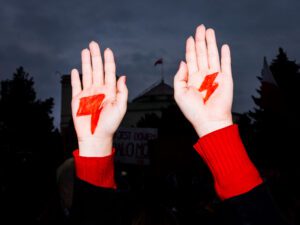According to the US Census Bureau, in 2018 there were more than 1.3 million Americans of Hungarian descent. At one time, the presence of Hungarians within Cleveland, Ohio was so great that the city was known as the “American Debrecen”. People began emigrating between 1970 and 1920, making the journey for the possibility of better employment and economic prospects. A letter written to the village of Komárom provided a first-hand account of the bountiful, unrestricted life that seemed to await those who chose to make the trip: “Here a man is paid for his labors, and I am certainly not sorry that I am here…In America there is no difference between one man and another. If you’re a millionaire you are called a Mister just the same and your wife is Missis.” This constant movement of individuals and families continued right through to the Hungarian revolution in 1956. The result of this influx is writ large across modern US history, with key figures in Hollywood, television, music, science and sports all part of the Hungarian community. This story is no different in the art world. Now, The Virginia Museum of Fine Arts presents the most comprehensive exhibition to examine the geographical reach and extensive influence that Hungarian American photographers have had on 20th century photography.

In November 1956, Soviet tanks invaded Hungary. The country was already under communist rule, with Hungarian leader Matyas Rakosi in league with Moscow, but students had taken to the streets in protest of the conditions in the country. Citizens had no freedom of speech, thousands of troops were a drain on the economy and the Russian language was being forced upon the people. Thousands of Hungarians were arrested and 26,000 were tried with additional imprisonments and executions as a result. This turbulent period followed the horrors of WWII, and many photographers began their careers documenting the realities of each conflict. The most famous example is Robert Capa (1913-1954). He is considered to be one of the greatest combat photographers in history and his images of WWII are some of the most iconic of the century. The infamous The Picture of the Last Man to Die was taken on April 18, 1945 during a fight to secure a bridge in Leipzig, Germany. Published by Life magazine, the photograph showed Raymond J. Bowman’s death by sniper fire. In an interview two years later, he said: “it was a very clean, somehow very beautiful death and I think that’s what I remember most from the war.” His work is emblematic of a generation of Hungarian creatives who were at the fore of documenting modern history and pushed the craft of photojournalism beyond how it was traditionally seen.

The focus of the exhibition extends beyond the nation’s borders and examines the influence of photographers on the US, especially in urban centres such as New York, Chicago and Los Angeles. These practitioners use their lens as a means through which to explore their new country with sensitivity, rigor and insight. John Albok’s (1894-1982) images of Central Park are bursting with personalist and characters, like Joy Riders in which two fluffy dogs poke their head out of a car window, their fur blowing in the breeze or the roaming musicians on public transport in Silent Night. Across the country, André de Dienes’ (1913 – 1985) portraits of cinema icons, including Marilyn Monroe, helped fuel Hollywood’s Golden Age, capturing the starlets and leading actors in images to be shared with the masses. His relationship with Monroe began when she was just 19 and spanned much of her life, the two briefly engaging in an affair. These image-makers were defining the aesthetics of an era, capturing the world as it was and styling it in a way that shaped how photography would come to be viewed in years to come. They brought an outsiders perspective, and yet their work it entirely American – their art perfectly emblematic of the excellence that comes from allowing cultures to influence one another.
American, Born Hungary is at The Virginia Museum of Modern Art until 26 January: vmfa.museum
Words: Emma Jacob
Image Credits:
Virginia Bruce, ca. 1938–39, László Josef Willinger, (American, born Hungary 1909–1989), gelatin silver print, 10 7/8 x 13 7/8 in. Virginia Museum of Fine Arts, Gift of Howard Greenburg, by exchange, 2020.186 © Estate of Laszlo Willinger, courtesy The John Kobal Foundation.
Lost Cloud, 1937, André Kertész (Kertész Andor), (American, born Hungary, 1894–1985), gelatin silver print, 8 1/2 x 5 3/8 in. Museum of Modern Art, New York, Gift of the Artist, 312.1965 © 2024 Estate of André Kertész.
Fractured Light, Budapest, 1976, Sylvia Plachy (American, born Hungary, 1943), gelatin silver print, 11 x 14 in. Courtesy of the Artist © Sylvia Plachy.





